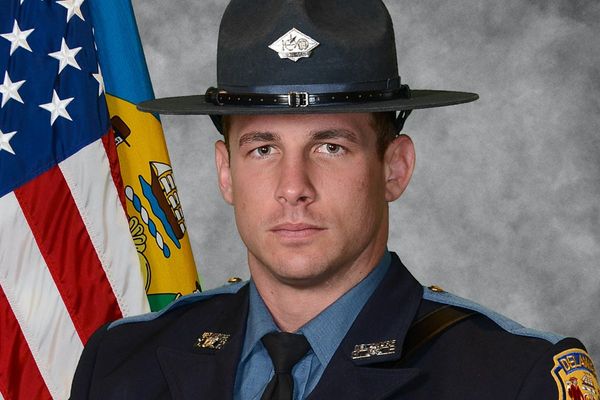
Haider* hid in the attic as gunmen rifled through his cousins’ belongings. “Is anyone upstairs? Don’t come down or I will kill you!” yelled a masked man wearing military fatigues. Haider waited in silence for an hour before fleeing his cousins’ house in the village of al-Sanobar on Syria’s coast.
He emerged to find his home ablaze and 11 members of his family shot dead, including his 22-year-old brother and 16-year-old cousin. His family were some of the more than 200 al-Sanobar residents killed in sectarian massacres in north-west Syria on 7 March which mostly targeted members of the minority Alawite religion, a sect of Islam.
The massacres were prompted by a coordinated attack on Syrian government forces by fighters loyal to the ousted president Bashar al-Assad. After coming under attack, the government issued a call for help.
Fighters and armed individuals descended on the Syrian coast where a bloodletting ensued, mostly against members of the Alawite sect to which the Assad family belong. By the end, more than 1,100 people were dead.
Unlike most of the victims’ families, Haider knows who killed his loved ones. The gunmen, who appeared to be pro-government fighters, filmed themselves trampling through his cousins’ home, singing and yelling “ethnic cleansing!” joyfully, before uploading the video to Facebook, as first revealed by a CNN investigation.
A spokesperson for Syria’s interior ministry told the Guardian the men in the video had been arrested, but at least one of the gunmen remains active on Facebook, posting as recently as Tuesday.
Haider, 25, said he was scared his family’s killers were still out there, leaving him in constant fear. “There’s no security at all, we are suffering. I’m dying a thousand deaths a day,” he said over the phone.
Syria’s president, Ahmad al-Sharaa, the former leader of the Islamist rebel group Hayat Tahrir al-Sham (HTS), has set up a fact-finding committee to investigate how the sectarian massacres unfolded, vowing that “no one would be above the law”.
The results of the investigation and how the government holds perpetrators accountable is seen as a crucial test for the new authorities in Syria, who have pledged to protect religious minorities. The committee, initially meant to deliver its report in early April, was granted an additional three months after it requested more time.
The lack of answers over how the killings happened and who was responsible has left victims’ families feeling robbed of justice.
“They said that after a month everyone would be held accountable. But so far nothing has happened. I just want security, and to finish with this issue of ‘ethnic cleansing’,” Haider said.
A source close to the committee has said that while they understand the political pressure to give answers to grieving families, a proper investigation could take “years”. They pointed to the UN special tribunal for Lebanon, which took 15 years to issue its verdict on the killing of the Lebanese prime minister Rafic Hariri, as an example of the difficulty of fact-finding missions.
Complicating the committee’s work is a deluge of fake pictures and videos which show horrific crimes from the civil war rather than the killings on Syria’s coast.
Witnesses have had trouble distinguishing who exactly committed violence against them and their families. After 14 years of war, Syria is populated by dozens of militias, many of which do not wear uniforms that civilians could easily identify.
Human rights groups, such as the Syrian Network for Human Rights, have pointed to Turkish-backed militias, such as the Sultan Suleiman Shah brigade, as being responsible for most of the killings of almost 900 civilians by pro-government forces on the coast.
Alawite civilians from two different villages in north-west Syria whose family members were killed told the Guardian they were attacked by members of the brigade. The Guardian could not independently verify their claims.
The militia’s leader, Mohammed al-Jassem, more commonly known by his nom du guerre, Abu Amsha, denied that his group harmed any civilians and said they refused to enter deep into the Syrian coast once they saw abuses happening.
“Our job was to clear the highway and return to Beit Yashout [a village on the coast]. Every village that we entered, they thanked us for the good treatment,” Abu Amsha told the Guardian while flanked by his senior officers at a militia headquarters in Afrin, northern Syria.
He then showed a slideshow of civilians being filmed thanking him personally, as well as a series of WhatsApp voice-notes that Alawite civilians sent praising the militia. He said that after an internal review, he had found that none of his 16,000 members had committed any abuses on the coast.
Abu Amsha and his militia were sanctioned by the US in 2023 for alleged human rights abuses, including the kidnapping and mass extortion of civilians in areas living under their control.
“All of my officers have certificates in international humanitarian law,” Abu Amsha said, pulling up a picture of his officers attending human rights training by the Swiss NGO Geneva Call.
The source close to the fact-finding committee said it was still unclear if militia members or individuals were responsible for most of the killings. Many of the armed individuals who killed civilians were not neighbours turning on one another, but people who came from surrounding areas after receiving phone calls from besieged members of Syrian general security.
While the promise of justice remains far off, the indignities suffered by victims grow greater.
Fadi* asked some relatives to check on his home after he fled to Lebanon to escape a massacre that killed 25 of his neighbours in the Alawite village of Arza, north Syria.
When Fadi’s relatives knocked on the door, a family from the neighbouring village answered. “The funniest thing is, they didn’t just take my house. They were also wearing my clothes and my children’s clothes. I’m not sure whether to laugh or cry,” he said.
* Names have been changed







